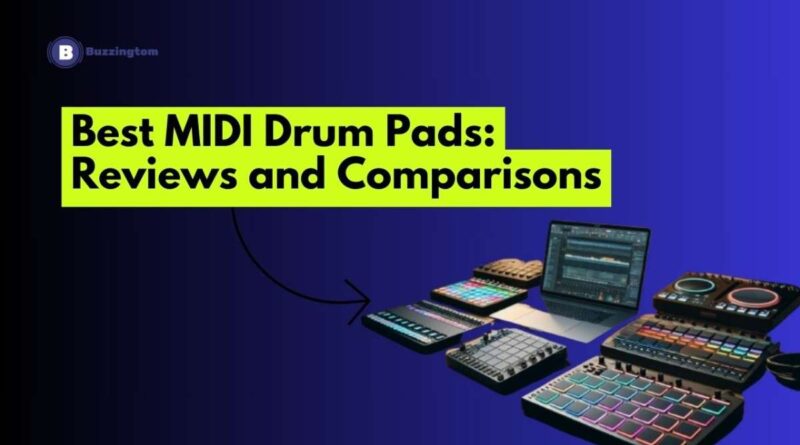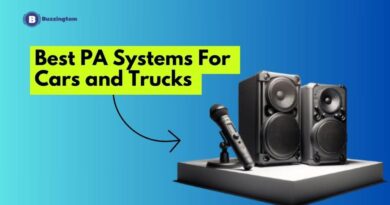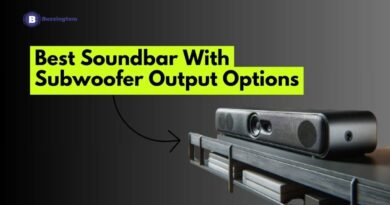Best MIDI Drum Pads In 2024: Reviews and Comparisons
Want to take your drumming to the next level or add powerful drums to your music? A MIDI drum pad might be just what you need. This guide explores how MIDI drum pads can solve your practice and production problems. We’ll also help you pick the perfect pad for you, with clear info on things like pad size and features.
Ready to take your drumming or music production to new heights? Let’s get going…
Best MIDI Drum Pad Options: Quick Comparison
| Best MIDI Drum Pads | Special Features | Buy On Amazon |
| Akai Professional MPD218 MIDI Drum Pad | MPC pads, note repeat | Check Price |
| Alesis Strike Multipad | Sampler, looper, soundcard | Check Price |
| PreSonus ATOM MIDI Controller/Pad | Tight integration with DAWs | Check Price |
| Korg nanoPAD2 Slim-Line USB MIDI Pads | X-Y touchpad | Check Price |
| Arturia BeatStep MIDI Pads | Sequencer, backlit pads | Check Price |
List Of Best MIDI Drum Pad Options In 2024
Here are some of the Best MIDI Drum Pad Options in 2024 to consider for your drumming or music production needs:
Akai Professional MPD218 (Top Picks)
- Build Quality: 9
- Pad Sensitivity: 7
- Feature Set: 8
- Software Bundle: 8
- Ease of Use: 7
The Akai MPD218 is a great buy for anyone who wants a strong MIDI drum pad controller. It has 16 thick, responsive MPC pads that are perfect for lively performances. Plus, you can switch between three different sets of pads, giving you a total of 48 pads for controlling your music.
In terms of features, the MPD218 has a lot to offer. It has note repeat, full level controls, and 18 knobs that you can assign functions to across three sets. This setup lets you control your music software and virtual instruments precisely, whether you’re performing live or working in the studio. Plus, it comes with useful software like Ableton Live Lite and MPC Beats, which is a big bonus. This is good for those who are just starting out or want to expand their music-making capabilities without spending more money.
But it’s not all perfect. You may have issues with the sensitivity of the pads, which might need some tweaking to get just right. This could be a downside for beginners or anyone who doesn’t want to mess around with adjustments.
However, on the whole, the MPD218 isn’t just about having lots of features; it’s about giving you a flexible and immersive way to make music. It offers top-notch performance for its price, making it a smart choice for both newbies and experienced music producers.
Specifications:
- Connectivity: USB
- Number of Keys: 16
- Special Features: MPC pads, note repeat, full level
- Model Name: MPD218
- Software Included: MPC Beats, Ableton Live Lite
- Expandable Banks: Yes, three pad banks
- Assignable Controls: 18 knobs
- iOS Connectivity: Available with additional hardware
- Included Subscription: 6-month Reason+ subscription
Pros:
- High-quality build and durable pads.
- Extensive control options with knobs and buttons.
- Generous software bundle included.
- Easy to integrate into any existing setup.
- Good value for money given the features.
Cons:
- Pad sensitivity may require adjustments.
- Some users report a steep learning curve.
- The device is USB-powered, which limits mobility.
- No direct iOS connectivity without an adapter.
- Full Level and Note Repeat buttons can be overly sensitive.
Alesis Strike MIDI Drum Pad
- Sound Quality: 9
- Versatility: 9
- Ease of Use: 6
- Feature Set: 9
- Build Quality: 8
The Strike Multipad by Alesis is a great investment for those who need a versatile MIDI drum pad. It has 9 pads that light up and respond to how hard you hit them, which is super helpful during live shows.
What makes the Strike Multipad special is it can loop and has its own soundcard. Plus, it has a huge 32GB of storage, so you won’t ever run out of space for your music bits. It even comes with over 6GB of stuff already loaded, like drum sounds and loops, which is handy for making music right away. But, it might be tricky for newbies. The instructions aren’t very detailed, so figuring everything out might take some time.
Compared to the Akai Professional MPD218, the Strike Multipad has more sounds and sampling options but might be harder to learn. Both have pads that respond well when you hit them, but the Strike Multipad has the bonus of glowing lights on the pads.
Specifications:
- Connectivity: USB
- Number of Pads: 9
- Special Features: Sampler, looper, soundcard
- Model Name: Strike Multipad
- Display: 4.3-inch color display
- Storage: 32GB internal, expandable via USB
- Built-in Sounds: Over 6GB of content
- Effects Processors: 5 built-in
- Inputs/Outputs: Multiple ins/outs for versatile connectivity
Pros:
- Extensive onboard storage and sound content.
- Integrated looper and sampler enhance live performance capabilities.
- RGB lighting on pads for visual feedback.
- High connectivity with multiple inputs and outputs.
- Robust build quality suitable for stage use.
Cons:
- Complex functionality can overwhelm beginners.
- Limited documentation and user support.
- Higher price point compared to some competitors.
- Bulkier than other drum pads, affecting portability.
- Requires time to fully utilize all features effectively.
PreSonus ATOM MIDI Drum Pad
- DAW Integration: 10
- Build Quality: 8
- Ease of Use: 9
- Feature Set: 8
- Portability: 9
PreSonus ATOM is a standout among MIDI drum pads like Akai and Alesis’. It shines because it seamlessly works with Studio One® and Ableton Live, making it perfect for those who want smooth music production. With 16 big pads that sense velocity and pressure and light up in RGB colors, it offers expressive input and dynamic performance.
ATOM helps musicians focus on making music instead of dealing with software. It can directly control DAW elements, reducing the need for a computer mouse or keyboard. Unlike the Alesis Strike Multipad, ATOM focuses more on integration and ease of use, rather than standalone features like sampling and sound storage.
Its portability and USB power make it great for musicians on the move. It’s small enough to fit in a backpack but sturdy enough for live shows.
Specifications:
- Connectivity: USB
- Number of Pads: 16
- Special Features: Deep DAW integration, pressure-sensitive pads
- Model Name: ATOM
- Included Software: Studio One Artist, Ableton Live Lite
- Pad Banks: 8 assignable
- Buttons: 20 assignable
- Rotary Encoders: 4 endless
- Compatibility: Most music production software
Pros:
Exceptional DAW integration for streamlined workflow.
- Portable and bus-powered, perfect for mobile setups.
- High responsiveness from full-sized pads.
- Comprehensive software bundle enhances value.
- User-friendly interface suitable for all skill levels.
Cons:
- Limited on-board sound capabilities compared to others.
- Primarily designed for integration, less standalone functionality.
- Lacks extensive onboard storage for samples.
- Focus on Studio One may limit appeal to users of other DAWs.
- No built-in audio inputs/outputs, which limits its use as a standalone device.
Korg nanoPAD2 MIDI Drum Pad
- Portability: 10
- Ease of Use: 9
- Build Quality: 7
- Feature Set: 6
- Value for Money: 9
The Korg nanoPAD2 is a compact MIDI controller loved by musicians who want something easy to carry and use. It has sixteen touch-sensitive pads and an X-Y touchpad for expressive control. It’s not as fancy as some other controllers like the Alesis Strike Multipad or the PreSonus ATOM, but it’s great for simple music-making on the move.
The nanoPAD2 is small and plugs into your computer with a USB cable, so it’s perfect for small studios or taking with you wherever you go.
Even though it’s small, the nanoPAD2 still works really well. The pads feel solid and respond nicely to how hard you hit them, which is important for playing music with feeling. It’s not super fancy with lots of extra sounds or options, but it has everything you need to get started making music.
Specifications:
- Connectivity: USB
- Number of Pads: 16
- Special Features: X-Y touchpad, touch scale function
- Model Name: nanoPAD2
- Dimensions: Extremely compact and slim
- Pad Banks: Four, with 64 total pad assignments
- Velocity Curves: Four settings
- Software Compatibility: Works with any DAW
- Power: USB-powered
Pros:
- Extremely portable and lightweight.
- Simple, intuitive interface suitable for beginners.
- Cost-effective for those on a budget.
- Responsive pads suitable for dynamic playing.
- X-Y pad adds creative control for live performances.
Cons:
- Limited functionality beyond basic pad triggering.
- No built-in sounds or effects.
- Build quality feels less durable than more expensive models.
- Lacks the deep software integration seen in some competitors.
- Limited customization options compared to more advanced pads.
Arturia BeatStep MIDI Drum Pad
- Sequencing Capabilities: 10
- Connectivity Options: 9
- Build Quality: 8
- Feature Set: 9
- Ease of Use: 7
When testing these MIDI drum pads, we had some trouble with the 5th option. However, when it came to choosing among the others, the Arturia BeatStep stood out for several reasons. It’s praised for its excellent sequencing abilities and versatile connectivity options.
Even though it ranked 5th, the BeatStep is highly regarded online. It’s not just a drum pad; it’s a powerful control center. It has 16 drum pads that sense both velocity and pressure, and they can send various MIDI signals.
One of the benefits is its dual function as both a MIDI controller and a step sequencer. This means users can control hardware synths, software instruments, and even analog gear via CV/Gate outputs. The backlit pads not only give feedback but also make it easier to use during live performances.
Compared to the Korg nanoPAD2, the BeatStep offers more advanced features, especially in connectivity and control options. While the nanoPAD2 is basic and highly portable, the BeatStep provides a more comprehensive set of features for users who want to connect various gear.
Specifications:
- Connectivity: USB, MIDI, CV/Gate
- Number of Pads: 16
- Special Features: Step sequencer, backlit pads, multiple connectivity options
- Model Name: BeatStep
- Pad Sensitivity: Adjustable, velocity and pressure-sensitive
- Included Software: Ableton Live Lite, Analog Lab Intro
- Sequencer Modes: 2 melodic sequencers, 1 drum sequencer
- Physical Outputs: MIDI, USB, CV/Gate, Sync
- Build: Sturdy, designed for robust use
Pros:
- Versatile sequencer functions expand creative possibilities.
- Extensive connectivity options cater to both modern and vintage setups.
- Robust construction suitable for studio and live environments.
- Intuitive backlit pads enhance usability in low-light situations.
- Comprehensive software bundle provides excellent starting tools.
Cons:
- May be overkill for users who need basic pad functionality.
- Larger and bulkier than some other pad controllers.
- Higher price point reflective of advanced features.
In-Depth Buying Guide: MIDI Drum Pads
MIDI drum pads, also known as drum controllers, are electronic instruments that allow you to trigger drum sounds, samples, and effects using pads instead of traditional acoustic drums. They are a powerful tool for music producers, drummers, and beatmakers alike. But with a variety of options on the market, choosing the right MIDI drum pad can be overwhelming. This guide will explore five key factors to consider before you buy, along with additional considerations to refine your choice:
1. Pads: Number, Size, and Sensitivity
- Number of Pads: MIDI drum pads come with varying pad configurations, typically ranging from 4 to 16. More pads offer greater versatility for complex rhythms and assigning different sounds. Beginners may find a smaller pad layout easier to manage, while experienced players might prefer a larger one. Consider the complexity of the rhythms you want to play and how you plan to use the pads. Will you be using them primarily for finger drumming or incorporating sticks? If you plan on using sticks, a larger pad layout might be more comfortable.
- Pad Size: Pad size affects playability. Larger pads are easier to hit accurately, especially for fast drumming and intricate techniques. Smaller pads are more compact and portable, making them ideal for travel or tight studio spaces. Think about where you will be using the MIDI drum pad most often and prioritize portability or playing comfort accordingly.
- Pad Sensitivity: Velocity-sensitive pads respond dynamically to the force of your hit, allowing for softer ghost notes and harder accented hits, adding realism and expression to your drumming. This is particularly important for drummers accustomed to the nuanced control of traditional drums. Some MIDI drum pads also offer adjustable pad sensitivity to fine-tune the response to your playing style.
2. Connectivity and Compatibility
- Connectivity: Most MIDI drum pads connect to your computer or drum machine via USB. Some offer additional connectivity options like MIDI ports for broader compatibility with external sound modules. If you plan on using the MIDI drum pad with a specific sound module or piece of hardware, ensure it has the appropriate connectivity options.
- Compatibility: Ensure the MIDI drum pad is compatible with your music production software (DAW) or drum machine. Many popular brands offer pre-mapped templates for common DAWs, saving you time setting up sounds. If you use a less common DAW, check the manufacturer’s website for compatibility information or look for pads that offer easy custom mapping of sounds.
3. Features and Functionality
- Sounds and Sample Loading: Some MIDI drum pads come with built-in sounds, while others rely on external software for sound libraries. Consider the variety and quality of sounds offered, and the ability to load your own samples for a customized sound palette. If you have a specific genre of music in mind, look for pads that come with sound libraries that cater to that style.
- Pads Banks and Editing: Pads can often be assigned to different sounds or functions across multiple banks, allowing for quick switching between kits during performance or creation. Look for pads with editing options to customize sounds and create your own unique kits. This is especially important for producers who want to create unique drum tones and textures.
- Additional Controls: Many MIDI drum pads include knobs, faders, and buttons for controlling various parameters like volume, effects, and instrument tweaking. These additional controls enhance your creative workflow and real-time performance capabilities. Consider how much control you want over your sounds during creation or performance. More knobs and faders might seem appealing, but can also add complexity to your setup.
4. Build Quality and Durability
- Playing Surface: Pads should be responsive and comfortable to play. Silicone pads are common and offer a good balance of affordability and playability. Mesh pads provide a more realistic drumming experience similar to acoustic drums, but tend to be more expensive. Consider your budget and how important a realistic playing experience is to you.
- Construction: A sturdy build ensures your MIDI drum pad can withstand regular use. Look for a unit with a solid chassis and durable pads. If you plan on using the MIDI drum pad heavily or transporting it frequently, prioritize a robust build quality.
5. Budget
MIDI drum pads range in price depending on features, number of pads, and brand. Beginners can find starter kits with basic functionality at affordable prices. Professional-grade pads with extensive features and high-quality sounds will naturally cost more. Define your budget early on to narrow down your options and choose a MIDI drum pad that offers the most value for your money.
A few tips to help you out:
- Are you a music producer creating electronic music or hip-hop beats? Prioritize features like a large number of pads for finger drumming, built-in sounds with a focus on electronic drums and percussion, and sample loading capabilities.
- Are you an acoustic drummer looking to add electronic elements to your live performance? Look for pads with large, velocity-sensitive pads for a more natural playing feel, trigger inputs for connecting acoustic drum triggers, and MIDI outputs for connecting to external sound modules.
- Do you plan on using the MIDI drum pad for live performance? Portability, ease of use, and features like pad banks for quick kit switching become more important.
Frequently Asked Questions
What are MIDI drum pads?
MIDI drum pads are electronic drum triggers that send MIDI data to a drum sound module or computer software, allowing you to play and program drums electronically.
What are the benefits of using MIDI drum pads?
Compared to acoustic drums, MIDI drum pads offer quieter practice, easier recording, more versatility with sounds, and increased portability.
What features should I look for in MIDI drum pads?
Key features include pad size and sensitivity, number of pads, pad triggering options (velocity-sensitive, aftertouch), backlit pads, connectivity options (USB, MIDI), and additional controls (knobs, faders).
Do I need a drum sound module with MIDI drum pads?
No, MIDI drum pads only trigger sounds. You can connect them to a computer with drum software or a dedicated drum sound module for a wider range of sounds.
What are some popular MIDI drum pad brands?
Popular brands include Akai Professional, Native Instruments, Alesis, Novation, and Arturia.
What are some beginner-friendly MIDI drum pad options?
Akai MPK Mini Play, Alesis Strike Mini, and Novation Circuit are good choices for beginners due to their affordability and user-friendly features.
What are some features important for live performance?
For live playing, consider pad durability, pad size for comfortable drumming, and easy navigation of controls in low-light situations (backlit pads).
How much do MIDI drum pads cost?
Prices range from under $100 for basic models to over $1000 for professional options. Consider your needs and budget when choosing.
Can I use MIDI drum pads with different music software programs?
Yes, most MIDI drum pads are universally compatible with any software that supports MIDI input.




